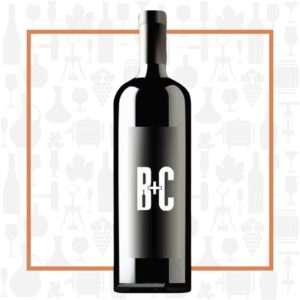Cellar Profile
In the mid 1700s, Bernardin Charrère moved from the Haute Savoie in Southeast France to the Aosta Valley and established Les Crêtes, a mill and farm in Aymavilles. This was in the middle of the 21 square mile Aosta Valley, in the heart of the wine region. In 1810, the family planted 2 hectares of vinifera grapes and the winery was born. The family still continues to craft wines from those vineyards to this day. Consistently recognized as the finest producer in the region, this is a boutique estate by international standards, but the largest privately-owned winery in Val d’Aosta. Working with the Italian government and other tiny vignerons in the region, Les Crêtes has been a pioneer in searching out rare, indigenous vinifera varieties — grapes like Petit Rouge, Mayolet, Prie Blanc, Premetta and Fumin, which exist nowhere else in the world — and helping protect them from extinction. This is one of the most challenging regions on earth to work for wine, with noncontiguous vineyards frequently planted on ledges on the side of steep Alpine mountains where they can find a little sandy soil. Hot summer days and extremely cool nights, coupled with a dry growing season allow for some of the longest hang times on earth. Their wines are powerful yet elegant, with trademark salty minerality – a true representation of this unique Alpine terroir.
Region
Surrounded by the Alps, the Val d’Aosta is home to the highest elevated vineyards in all of Europe. The region is divided into three main vineyard areas: the upper valley,Valdigne; the central valley; and the lower valley. Most vineyards in the Aosta Valley occupy the steep, south-facing slopes above the Dora Baltea river, a tributary of the Po. The dramatic topography and diminutive size of the valley mean that the area available for viticulture is limited. Much of the valley floor, with its mineral-rich, well-watered soils, is simply too fertile for quality viticulture. As a result, many of the best vineyards here are on the lower slopes, and climb steadily up the slopes to top altitudes of around 1300m above sea level.
Vineyard
Torrette is a subzone of the Val d’Aosta and is the largest of the seven sub-regions of the DOC, covering the steep slopes of the Dora Baltea River. Petit Rouge dominates here, representing 70% of total production. The central part of the valley, where Torrette lies, is oriented east to west and vineyards can be found stretching up the sides of the surrounding mountains to altitudes of 800 metres above sea level. Trained in the French Guyot method, the vines are 30 years old on average. The Rosé is sourced from these rare, old vine vineyards. Sandy soils give primary fruit notes and well-drained gravel soils, along with the large number of sunny days during the growing season, ensure full flavour development of the berries.
Varieties
Petit Rouge is a dark-skinned grape variety grown in the Val d’Aosta. It is the region’s most widely-planted red wine grape and is used to make tart, fruity reds which are often compared to Beaujolais. The Petit Rouge vine can be identified by the small dusty-coloured grapes that, according to wine expert Jancis Robinson, can almost look gray. During the growing season, the variety is late-ripening and is often harvested with low levels of acidity. It is often blended with other light-coloured Val d’Aosta grapes to add color as well as floral notes to the bouquet in the final wine.
Winemaking
Hand-harvested grapes from old-vine vineyards around the town of Aymavilles are macerated for 3 hours, to garner a light pink hue but to avoid any tannin or astringency. The juice undergoes a cool, 12-day fermentation in stainless steel vats. It then spends two months aging on its lees, for added complexity, before being bottled.
Tasting Notes
This is the first time the winery has bottled this beauty! The grapes come from some of the oldest plantings of Petite Rouge in all of Aosta. The delicate salmon colour evokes Provençal comparisons. The nose is evolved and aromatic, with black currant, acacia blossom and raspberry. Medium-bodied, with tingling acidity, the fruits replay on the palate, along with some rather interesting stone fruit elements. Chill lightly and serve with a thin crust mushroom and truffle pizza, fried white fish or grilled root vegetables.

 info@buyersandcellars.ca
www.buyersandcellars.ca
info@buyersandcellars.ca
www.buyersandcellars.ca